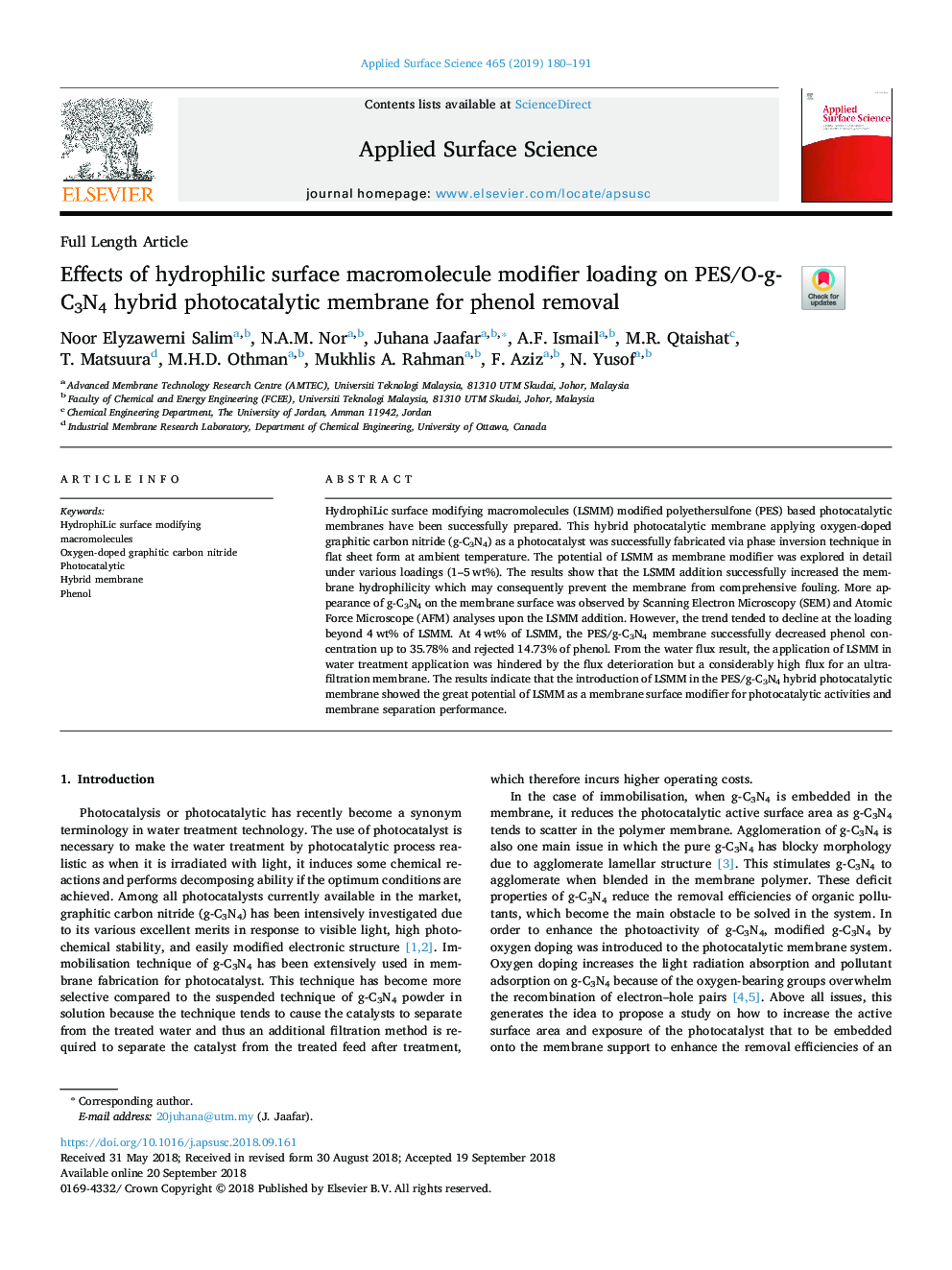| Article ID | Journal | Published Year | Pages | File Type |
|---|---|---|---|---|
| 10155071 | Applied Surface Science | 2019 | 12 Pages |
Abstract
HydrophiLic surface modifying macromolecules (LSMM) modified polyethersulfone (PES) based photocatalytic membranes have been successfully prepared. This hybrid photocatalytic membrane applying oxygen-doped graphitic carbon nitride (g-C3N4) as a photocatalyst was successfully fabricated via phase inversion technique in flat sheet form at ambient temperature. The potential of LSMM as membrane modifier was explored in detail under various loadings (1-5â¯wt%). The results show that the LSMM addition successfully increased the membrane hydrophilicity which may consequently prevent the membrane from comprehensive fouling. More appearance of g-C3N4 on the membrane surface was observed by Scanning Electron Microscopy (SEM) and Atomic Force Microscope (AFM) analyses upon the LSMM addition. However, the trend tended to decline at the loading beyond 4â¯wt% of LSMM. At 4â¯wt% of LSMM, the PES/g-C3N4 membrane successfully decreased phenol concentration up to 35.78% and rejected 14.73% of phenol. From the water flux result, the application of LSMM in water treatment application was hindered by the flux deterioration but a considerably high flux for an ultrafiltration membrane. The results indicate that the introduction of LSMM in the PES/g-C3N4 hybrid photocatalytic membrane showed the great potential of LSMM as a membrane surface modifier for photocatalytic activities and membrane separation performance.
Keywords
Related Topics
Physical Sciences and Engineering
Chemistry
Physical and Theoretical Chemistry
Authors
Noor Elyzawerni Salim, N.A.M. Nor, Juhana Jaafar, A.F. Ismail, M.R. Qtaishat, T. Matsuura, M.H.D. Othman, Mukhlis A. Rahman, F. Aziz, N. Yusof,
